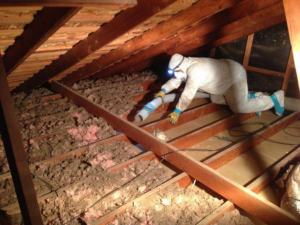Herbal medicines are complex mixtures of ingredients that come from the roots, stems, seeds, leaves or flowers of plants. They are used to treat illnesses within local or regional healing practices.

Some herbs have been shown to be effective in clinical trials. These include ginseng, which is used for fatigue, and St John’s wort, which is often recommended for mild to moderate depression.
Echinacea, a flowering plant in the daisy family, is well-known for its immune system-stimulating properties. It is commonly used to shorten the duration of colds and flu and reduce symptoms such as a sore throat (pharyngitis), cough and fever. It is available in dried form, liquid extracts and capsules. It is also found in creams and ointments used to treat slow-healing wounds.
The herb contains chemicals called phenols, volatile oils, alkamides and glycoproteins that may be responsible for its immunostimulatory effects. It has been shown to increase in vitro phagocytosis by macrophages. The roots contain higher concentrations of phenols and lower concentrations of polysaccharides, but it is not clear which part of the plant is most effective.
In addition to its immunostimulatory properties, echinacea is said to have anti-inflammatory and antibiotic effects. It is thought to act by inhibiting cyclooxygenase, which is involved in the inflammatory process. It is also thought to decrease inflammation by increasing the production of hyaluronic acid in the body, which helps bind tissues together. The highest levels of hyaluronic acid are produced in the root.
Some studies have suggested that echinacea can help prevent viral infections, such as herpes simplex virus and shingles. However, larger-controlled trials are needed to confirm these findings. In one study, a commercial product containing echinacea was found to prevent severe respiratory infections caused by coronaviruses.
Several laboratory experiments suggest that echinacea can boost different types of immune cells and help them communicate with each other better, as well as kill bacteria and viruses. It is also believed to boost natural killer cells, which are important in fighting cancerous cells. However, there is no evidence that echinacea can treat or prevent cancer in humans.
As with any herbal medicine, it is best to use echinacea in moderation and consult a qualified health care provider before using it, especially for those who have autoimmune disorders or take drugs that suppress the immune system. Pregnant and breastfeeding women should not use echinacea. People with allergies to plants in the Daisy family should avoid echinacea as well.
Feverfew
Feverfew, also known as Mallow or Tanacetum parthenium, is a flowering herb that is native to Asia Minor and the Balkans and now grows in waste areas, roadside edges, and wooded areas from northern Canada to Maryland and westward to Missouri. It gets its name from the fact that first-century Greek physician Dioscorides used it as an antipyretic to reduce fevers. Its name may also derive from the fact that its leaves have a feathery appearance.
It has a long folk history of use in the treatment of inflammatory conditions such as migraine headaches. Experimental studies have confirmed that feverfew has activity similar to common non-steroidal anti-inflammatory agents, such as aspirin. Feverfew is thought to have anti-inflammatory effects by inhibiting the synthesis of compounds which promote inflammation, including inflammatory prostaglandins, leukotrienes, and thromboxanes. In addition, it has been found to have uterine stimulant activity which agrees with its folk use as an abortifacient and emmenagogue, for the prevention of certain labor difficulties. It also has sedative properties which may help alleviate the nausea and vomiting associated with some migraines.
In a clinical trial, feverfew was shown to be more effective than placebo for the treatment of migraine headaches. During the study, participants reported fewer attacks of migraine, less severity of the attacks and shorter duration of the symptoms. They also experienced improved digestion, a sense of well being and improved sleep. The results of this study led to two more double-blind clinical investigations which both support the use of feverfew for the prevention and treatment of migraine.
The main active ingredient in feverfew is the sesquiterpene lactone called parthenolide. A number of other chemicals have been isolated from the herb as well, and are believed to have some pharmacological activity. The herb is considered safe for most people, although those with allergies to members of the Compositae family (ragweed, marigolds, chrysanthemums) and yarrow should avoid it. It is also unsafe to take while pregnant or breastfeeding. Side effects from feverfew are rare, but can include mouth ulcers or inflammation, gastrointestinal upset, and nausea and vomiting.
Garlic
Garlic is an ancient medicinal plant that has been used as a food, a spice and a remedy for various diseases since prehistoric times. It has antiviral, anti-microbial, antifungal and antioxidant properties and is a rich source of sulfur compounds. It also contains a variety of other essential nutrients and has a range of possible pharmacological effects.
Its primary component, allicin, has been shown to have a wide range of health benefits. Allicin is a sulfur compound that is released when the bulb is crushed or chewed. It converts cytosolic cysteine sulfoxides into thiosulfinates, which are odoriferous volatile organosulfur compounds. Allicin and its metabolites have been shown to exhibit a number of health benefits including antimicrobial, anti-fungal, and antiviral activity (23).
In studies, garlic has been found to reduce blood sugar levels in people with diabetes. It has also been shown to lower cholesterol, which is a risk factor for heart disease. In one study, patients with type 2 diabetes who took aged garlic extract had improved fasting blood glucose and hemoglobin A1C levels compared to those taking placebo. In addition, it has been shown to increase Na+/K+ ATPase in rat heart tissue, and its metabolites have been shown to partially decrease cardiovascular risk factors (24).
Studies have also shown that garlic has strong chemopreventive properties. It has been shown to reduce the development of chemically induced tumors in rats and mice, as well as to prevent metastasis in cancerous breast, colon, liver, and lung tissues. It also has been shown to inhibit cancer cell proliferation and reduce the cellular invasiveness of human leukemia cells.
In traditional medicine, it has been used to treat a variety of ailments, including high blood pressure, infections, and snakebites. It has also been used to prevent colds and to ward off evil spirits. It is thought that these benefits are a result of its ability to improve the immune system and to strengthen the body. In fact, Avicenna recommended it as a treatment for arthritis, toothache, chronic cough, constipation, parasitic infestation, and other diseases. It is also used to help fight fatigue and promote healthy aging.
Ginger
Ginger root (Zingiber officinale Roscoe, Zingiberaceae) is a popular dietary condiment and herbal medicine with a wide variety of traditional uses. The rhizomes contain volatile oils containing the major components gingerols, shogaols, and zingerone, which are believed to provide most of its medicinal properties. Ginger is a highly effective carminative that relieves intestinal gas. It also helps to prevent and treat inflammatory conditions of the digestive tract, including ulcerative colitis, constipation, and indigestion. It has a high antiemetic activity and can be recommended for nausea caused by pregnancy, chemotherapy, and some surgical procedures. Ginger has a high content of antioxidants and can help protect the cells against oxidative damage.
The oil in ginger root has a high content of essential fatty acids, which is thought to account for its ability to improve digestion and protect the intestinal lining. It is also reported to have anti-inflammatory effects, although this claim needs further investigation. Studies on rats suggest that ginger extract may alleviate osteoarthritis pain by reducing the production of inflammatory enzymes in joints.
Ginger has a long history of use in treating gastrointestinal distress, including vomiting and nausea caused by various conditions such as premenstrual syndrome, the common cold, flu-like symptoms, and headaches. It is also known to help with digestion and to ease the symptoms of arthritis, colic, indigestion, and menstrual cramps.
Several studies show that ginger can significantly lower blood sugar levels and increase insulin sensitivity in diabetic patients. However, more research is needed to confirm these results and establish a safe dose of ginger for diabetics.
In addition to its antiemetic action, ginger has been shown to protect against hepatotoxicity induced by ethanol (Mallikarjuna and Ohsawa 2002). It has also been shown to reduce age-related oxidative stress markers in rats (DerMarderosian and Beutler 2006).
A cup of ginger water—which is simply boiled water with slices of fresh or powdered ginger—can help alleviate bloating. This drink is especially helpful for women with painful menstrual periods. You can also try adding slices of fresh or powdered ginger to your smoothies or other beverages for extra flavor and health benefits.








